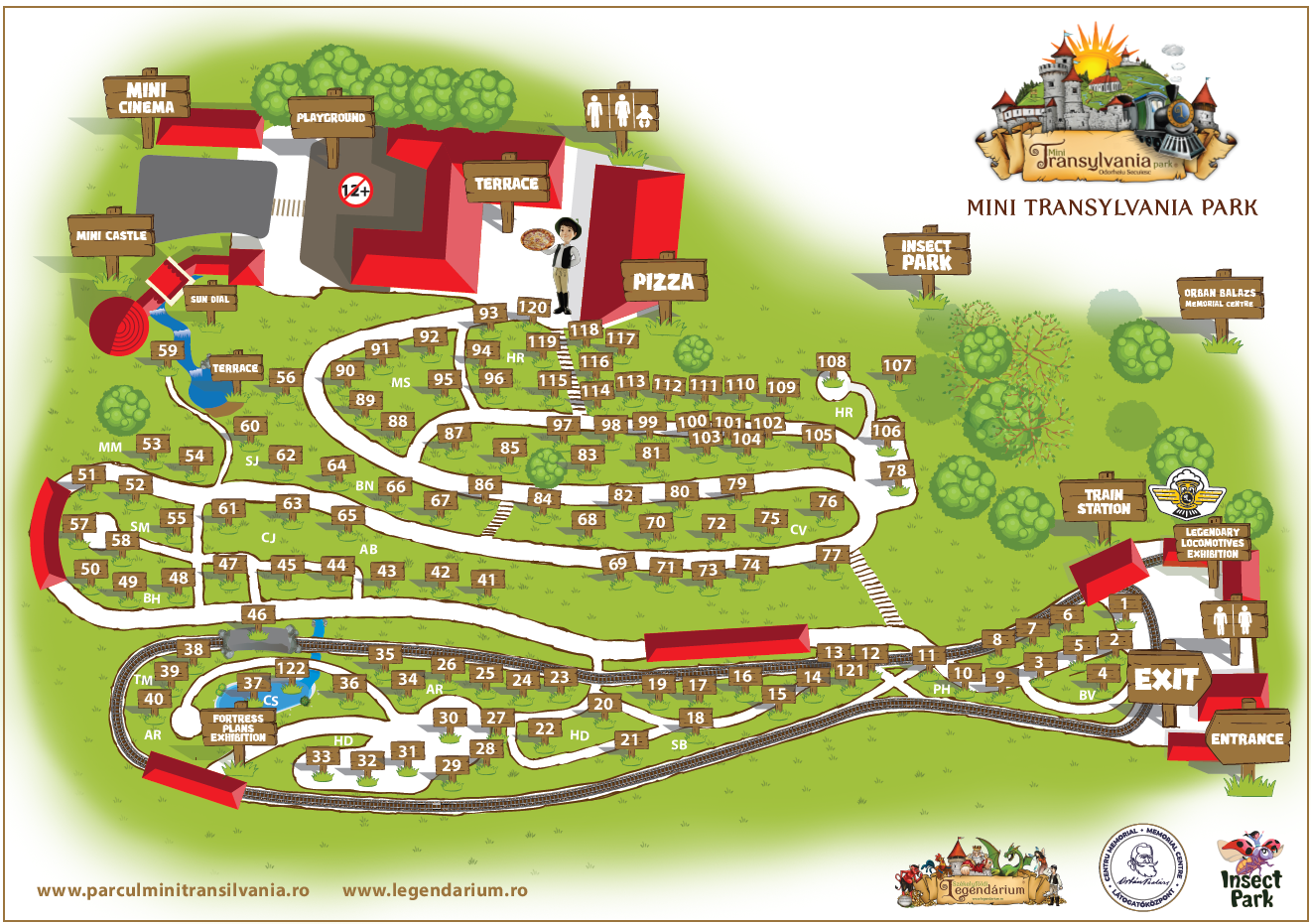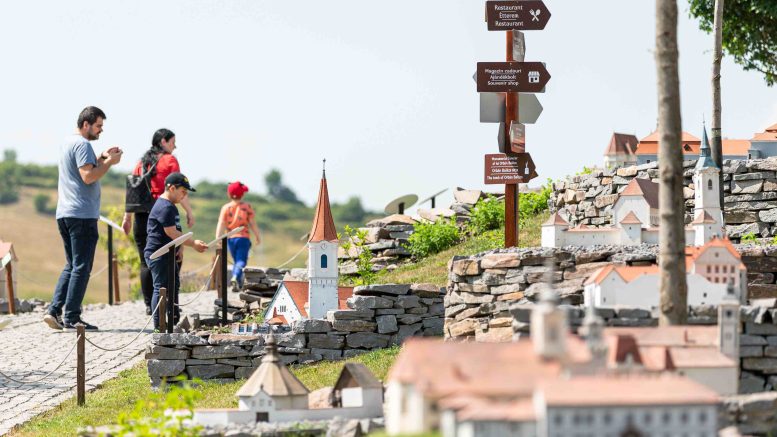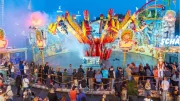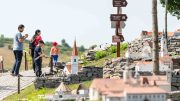The name Transylvania conjures up images of a magical world, where memories of history, magnificent architecture and legends linked to the unique atmosphere of the snow-capped mountains go hand in hand. You can now experience this special atmosphere in a single day at the Golden Pony Award-winning Mini Transylvania Park in Shejkefürdő, Transylvania, where the most important historical buildings and towns of Transylvania come to life in their medieval state, in miniature.
While I was looking at a miniature replica of the castle of Steinholm, imagining I was walking between the Salonna Tower and the Tower of the Servants, to be transported back to the Middle Ages, to watch the enemy approaching from the bastion as a defender of the fortress, the children were already with their mother at the miniature Szekler steamer running on the 300-metre circular track, to jump on the tiny train and enjoy the fact that everything here is adapted to the size of the little ones.
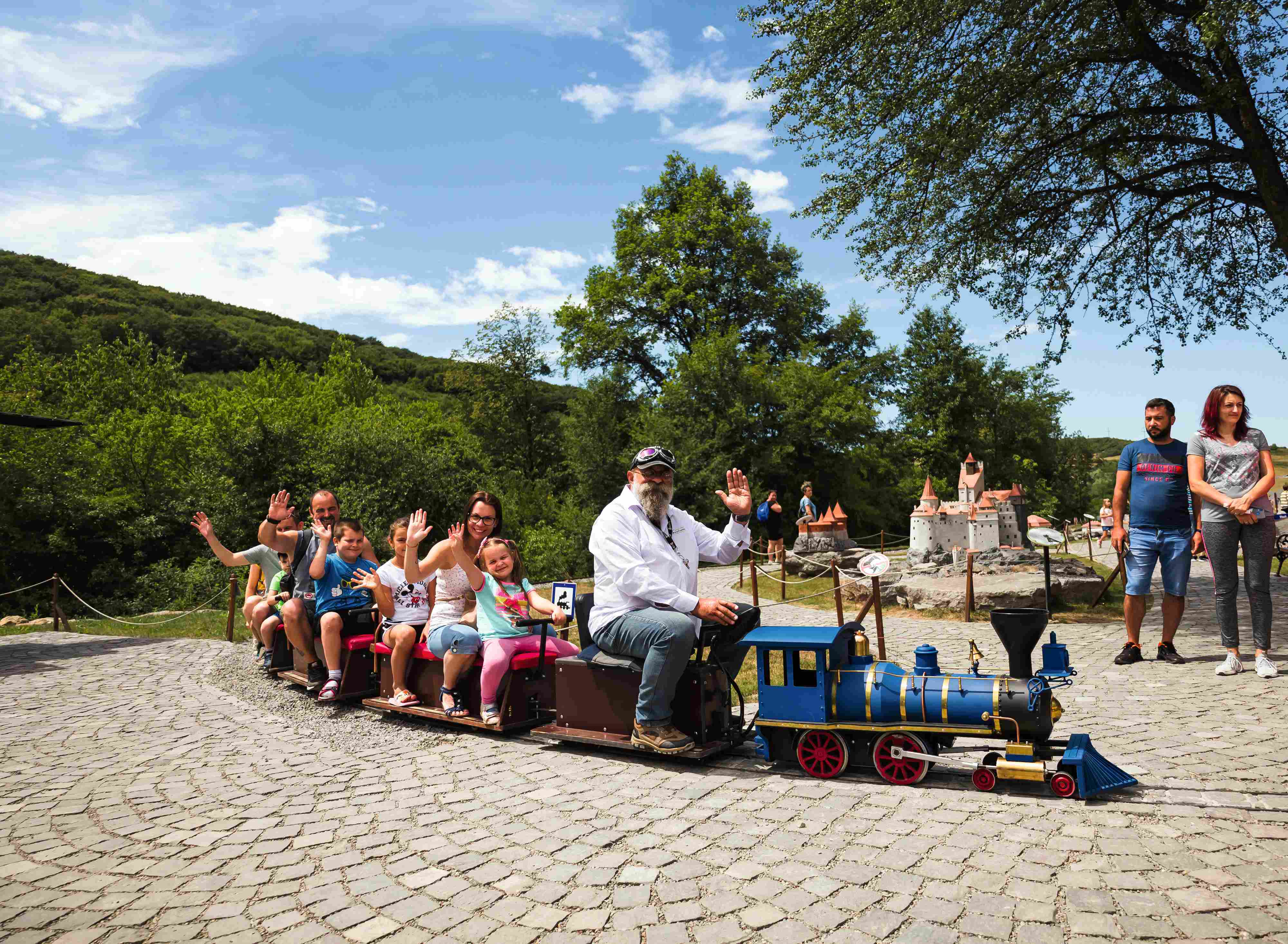
Where the walls tell a story
Moreover, in the Mini Transylvania Park, not only the small train that pays tribute to Balázs Orbán and Gábor Ugron, the MP who once fought for the construction of the Szekler railway network, but also the originals of each attraction have their own exciting stories and legends. Of which, Count Dracula’s castle has become the most famous. Not the castle it really was, of course. For when Bram Stoker, inspired by the region’s mythology, created Dracula, who in the novel claims to be the Szekler Count, the name of the castle in the vicinity of Brasov, Dracula Castle, was intertwined with the story. But the building, considered one of the most beautiful castles in Transylvania and built with the permission of King Louis I of Hungary, has nothing to do with Count Dracula or Vlad Tepes, who is identified with him in the novel. That is why the mini-park also includes a miniature replica of Poenari Castle, the real seat of the monarch who became notorious for his cruelties and impalements.
Walking further around Romania’s only multicultural theme park, it soon becomes clear that while many people know that Transylvania’s wild landscapes were once home to castles and palaces of extraordinary beauty, there are even more of them than most people think.
Perhaps the least known peculiarity is that walking through the mini fortified churches reveals the history of a typical 13th-16th century building form, which was inscribed on the UNESCO World Heritage List in 1999 as „Villages with Fortified Churches in Transylvania”. The fortified churches in Transylvania, which are part of the World Heritage List: Nagybaromlak in Sibiu county, Berethalom in Szeben county, Kotel in Fehér county, Prázsmár and Szászfehéregyháza in Brasov county, Szászkézd in Mures county and Székelyderzs in Harghita county, are unique in that they are built with a real rampart around the churches. This type of construction was mainly characteristic of the Saxon villages: at one time, more than 250 fortified churches of this type were built throughout Transylvania.
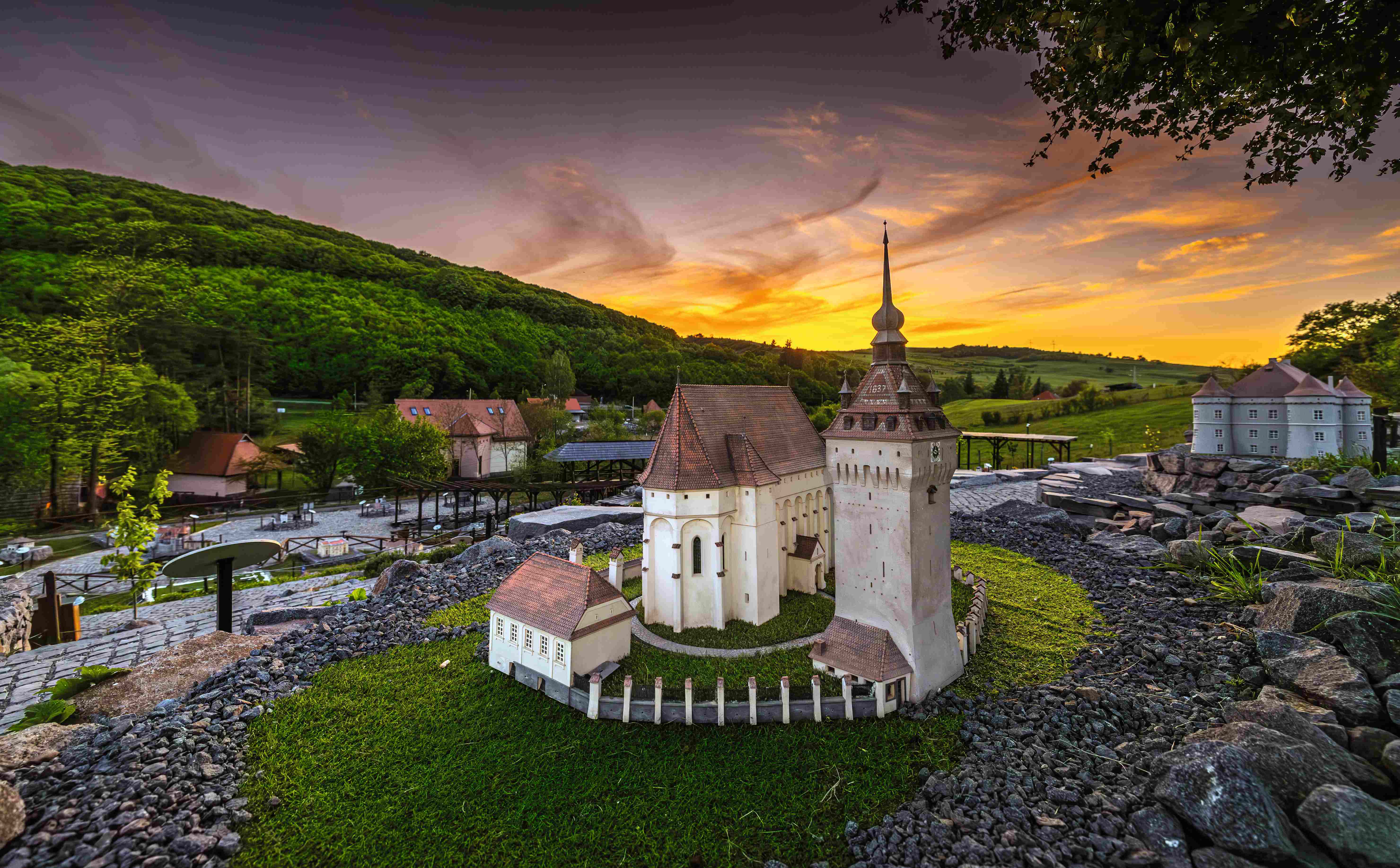
The temples were surrounded by thick walls, equipped with bastions, pitchforks, murder traps and other defensive features appropriate to the military level of the time, in order to protect them from constant Turkish and Tatar invasions. In case of danger, the population of the area moved inside the walls, where everyone had their own corner in the fortress’s corner bastions and ramparts, where, in addition to their families’ grain, they also stored their bacon stocks in times of peace and war. The Székelyderzs, one of the southern border villages of Szeklerland, still keep the tradition of storing bacon in the bastions and grain in the sheds inside the castle walls, which you can see in miniature in the Mini Transylvania Park.
Interactive time travel
More than 120 of Transylvania’s most important historical buildings, including the Castle of Trucevo, Bran Barcarozno Castle, the Castle of Deva, the Citadel of Brasov, the Fortress Church of Sasov, the Fortress Church of Fogaras, the Fortress Church of Prasov,the Bethlen Castle (Magna Curia), the Tismana Monastery, the Vajdahunyad Castle or the Govasdia Granary – among the miniature copies of each monument, a separate textual description of its history is provided on a separate plaque. And if you prefer to listen to the information while looking at the building, you can start the audio tour by simply clicking on the QR code after downloading an app.And while it’s nice to know that many of the historic buildings listed in the park are UNESCO World Heritage sites, it’s sad to see that more than one of the legendary castles and palaces has been lost in the storm of the centuries.It is therefore a pleasure to be able to admire them in their original medieval state in the park.
Just like the old town of Cluj Napoca, Sibiu, Gulaforo, Târgu Mureş, surrounded by the city walls, we can see the old town as it was walked by the medieval inhabitants. There is also a small exhibition of original plans of several Transylvanian castles.
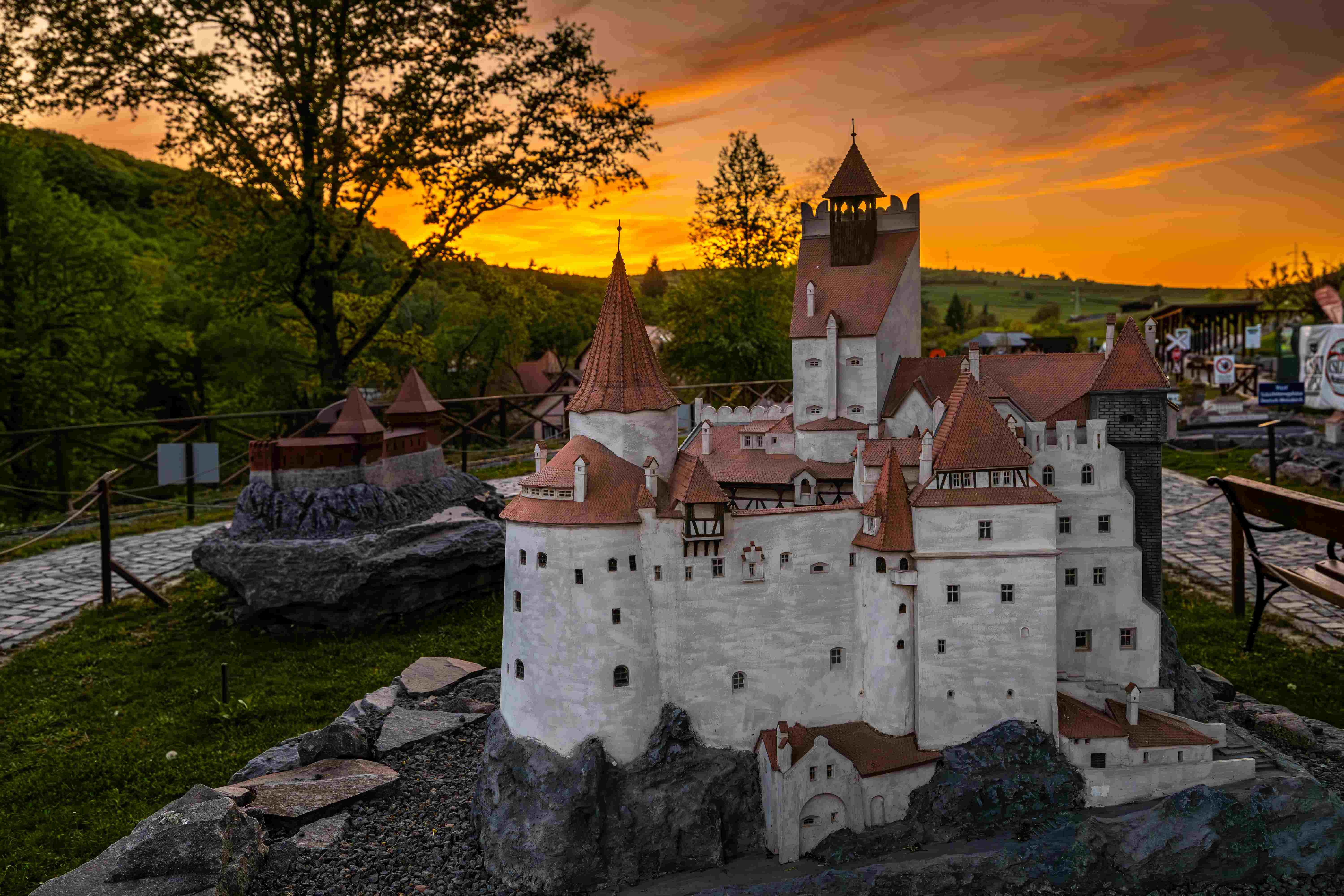
Opened in 2020, the 8,000 square metre Mini Transylvania Park will also be constantly adding new attractions. One of its newest jewels is the iron bridge on the railway line of the miniature steamer, which has been carefully and precisely designed and uniquely built on the basis of models built in the 19th century.One of the next attractions will be the medieval town of Brasov, with all the buildings of the period.
A multi-generational source of pleasure
And while the older children will enjoy the spectacle and legend of the magnificent buildings, the park has special attractions to ensure that the youngest members of the family can also have a fun and enriching experience.In addition to the tiny railway museum and model railway, there are interactive toys, a tower bell, a musical fountain and a coal train that they can experience with their own hands.Just as they can learn about the power of water by controlling the water mill and other water-powered tools.
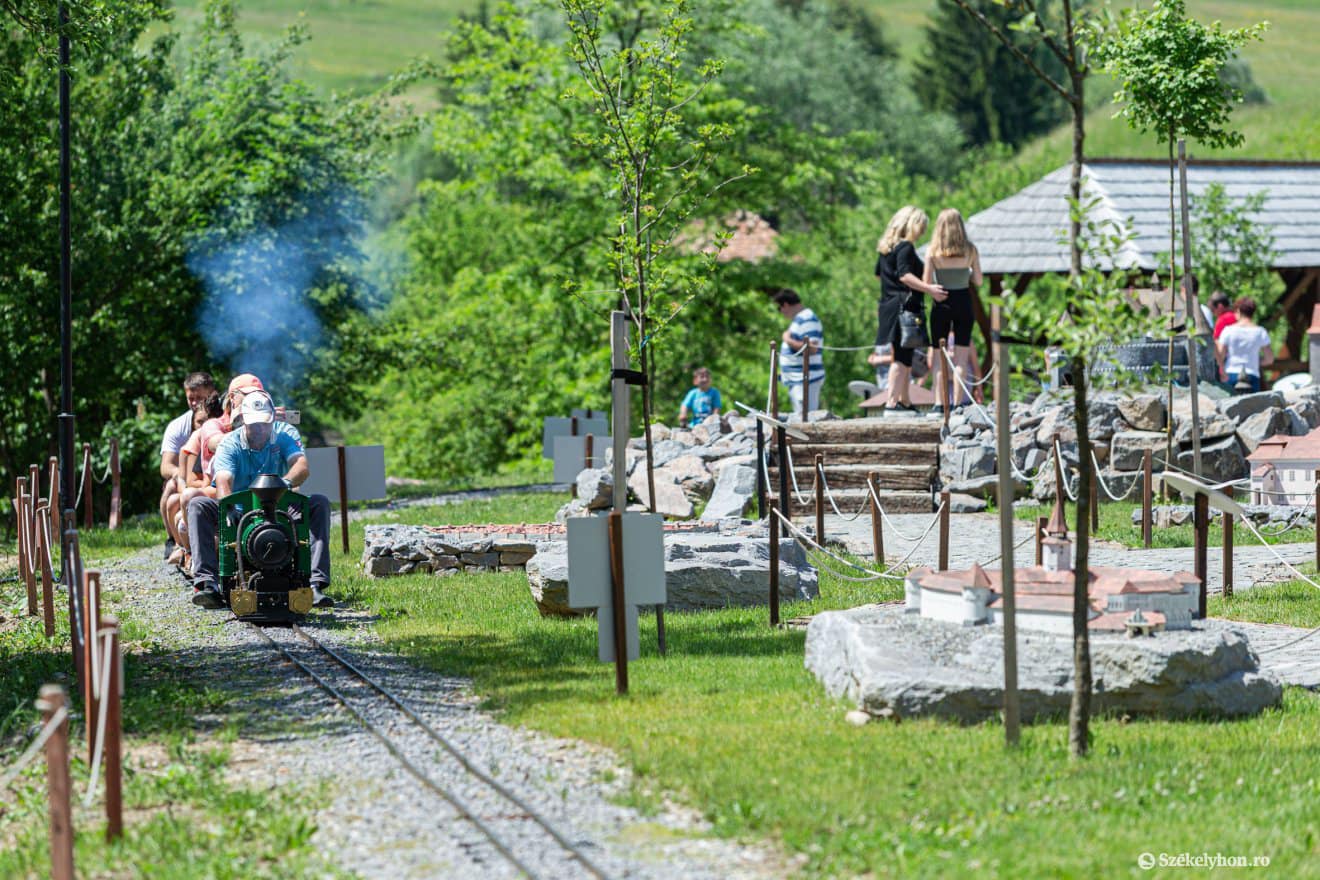
Children – and parents, of course – will also enjoy a small castle built to the scale of the smallest children, combining the bastions of three different buildings, within the walls of which the father and grandfather of the family can imagine themselves as the real lords of the castle, with its coffered ceiling, bastions, cannons, treasure chamber and dungeon.
Next to the castle, there is a children’s adventure park, where the Mini Transylvania Park, created by the Szekler Legendary Studio, which has turned Szekler legends into cartoons, offers lifelike Szekler fairy-tale characters.And while the charming playground, reminiscent of the pre-online era, invites the little ones to play with folk wooden toys, the mini-museum will bring to life episodes of the Legendarium cartoon series in the language of their choice.Because the Mini Transylvania Park is more than a tourist attraction: it is also a cultural experience that surprises visitors of all ages by bringing the land of legends to life in a new dimension.
They can also bring their four-legged friends, because the park is dog-friendly!
The dream and its birth
„Ten years ago, I was working in the European Parliament in Brussels, where I noticed that almost no one had heard of the Szeklers: who and what we are and how long we have lived here.I was also saddened to see that the Mini Europe open-air model park in Brussels does not show anything about Transylvania. That’s when I decided to try to present the Szeklers’ mythology, history and built heritage to the world through books, cartoons and then through the model park”, explains Szabolcs Fazakas, the creator of the Mini Transylvania Park, who worked as a journalist and cameraman at the beginning of his career.Thus the idea was born to transform the former famous bathing place of Odorheiu Secuiesc, the former estate of Balázs Orbán, a legendary figure of Szeklerland, into an internationally renowned tourist destination by creating the Mini Transylvania Park.
A great recognition of Mini Experiences
While in 2024, the Mini Transylvania Park was named the Romanian Tourist Destination of the Year in its category with 120,000 visitors, the Sejkefjord facility has already received an international award. In 2023, it won the Golden Pony Award in Italy, which recognises excellence in leisure parks from fifty-three countries around the world, organised by Games&Parks Industry Magazine. In 2021, it received the Family Frendly Award from Visit Harghita, part of the Harghita County Council.

Szejkefürdő attractions
Besides the Mini Transylvania Park in Shejkefjord, there is also the fascinating Beetle Park, where visitors can discover 15 giant and 18 robotic beetles. These include several species that are also found in Romania. The park also features giant butterflies, horned beetles, ladybirds, locusts, centipedes and scorpions, among others, giving visitors a closer look at the wonders of the insect world.
Leaving the Mini Transylvanian Park, a visitor centre awaits visitors on the path leading to the Balázs Orbán tomb. Here, an interactive exhibition presents the life and work of Balázs Orbán, author of the monumental work Description of Szeklerland. This is the main work of his life and is invaluable from a historical, archaeological, natural history and ethnographic point of view for anyone wishing to gain a deeper understanding of Transylvania. His tomb in Shejkefürdő is now a place of pilgrimage.So perhaps there could be no better place for the Mini Transylvania Park than where Balázs Orbán himself felt most at home.The path to the tomb is also special because it is marked by the various styles of Szekler gates erected by the grateful posterity over more than a hundred years. The last of the sixteen gates is the one that Balázs Orbán himself had erected in his lifetime.
Next to the Mini Transylvanian Park is the Wine Water Museum, which depicts the era when Balázs Orbán created a flourishing spa on his estate and then organised the transport of the medicinal water to Odorheiu Secuiesc in earthenware jugs on buffalo-drawn carts.
In the second half of the following century, between 1871 and 1890, the spa and the surrounding area were the property and favourite residence of Balázs Orbán.He distinguished it from the local „peasant baths”.
Its centre was the twenty-four-bath hot baths and the adjacent cold-water pool, which used the waters of the Attila spring.The ‘petroleum’ water of the Sarolta spring to the north was used for drinking.Villas, or as the locals called them, apartments, were built on the baths.Bath guests and city excursionists could dine in the 100-room Székely Mózes tavern and enjoy themselves to gypsy music.
The death of Balázs Orbán, however, brought an end to the flourishing of the small spa.
After a decade of work, the exhibition building opened its doors on 21 May 2008.
Visitors can see the water jugs and the buffalo cart carrying water that have become symbols of the town.
The maps of János Bányai, the geologist who mapped nearly 2,500 sources of wine water in Szeklerland, are also on display, as are some of his mineral and rock collections, together with the portraits of the scientist that once adorned the walls of his study.
Zoltán M. Érsek
